TEXT AND PHOTOGRAPHS BY KASTURI MUKHERJEE
Asansol, West Bengal
This Russian Colouring book called The Red Poppy with drawings by N. Obrucheva, printed in the USSR, was published by the “Malysh” Publishing House, a Soviet children’s imprint which contributed to the production of children’s picture books, albums for colouring and serial publications for children.
Born in the very late 1980s, I lived my childhood during the fag-end of a time when India still held political and trading ties with the USSR. The cultural exchange between the two countries was strong and as a result of which the Indian book-market was thriving with gems from that country. My grandfather, Arabinda Bhattacharya, a book enthusiast, though that’s a mild way of putting it, bought it for me when I was around seven years old. Asansol, my hometown, once a colonial railway town had a small bookshop inside a colonial mansion (now dilapidated and in the hands of private owners who want to undo it and build a commercial supermarket in its stead), called Atwal Bookstores, in the local main market that sold an assortment of foreign books. He probably bought The Red Poppy from there or at the annual book fair in the town, sometime between the late 1980s- early 1990s.
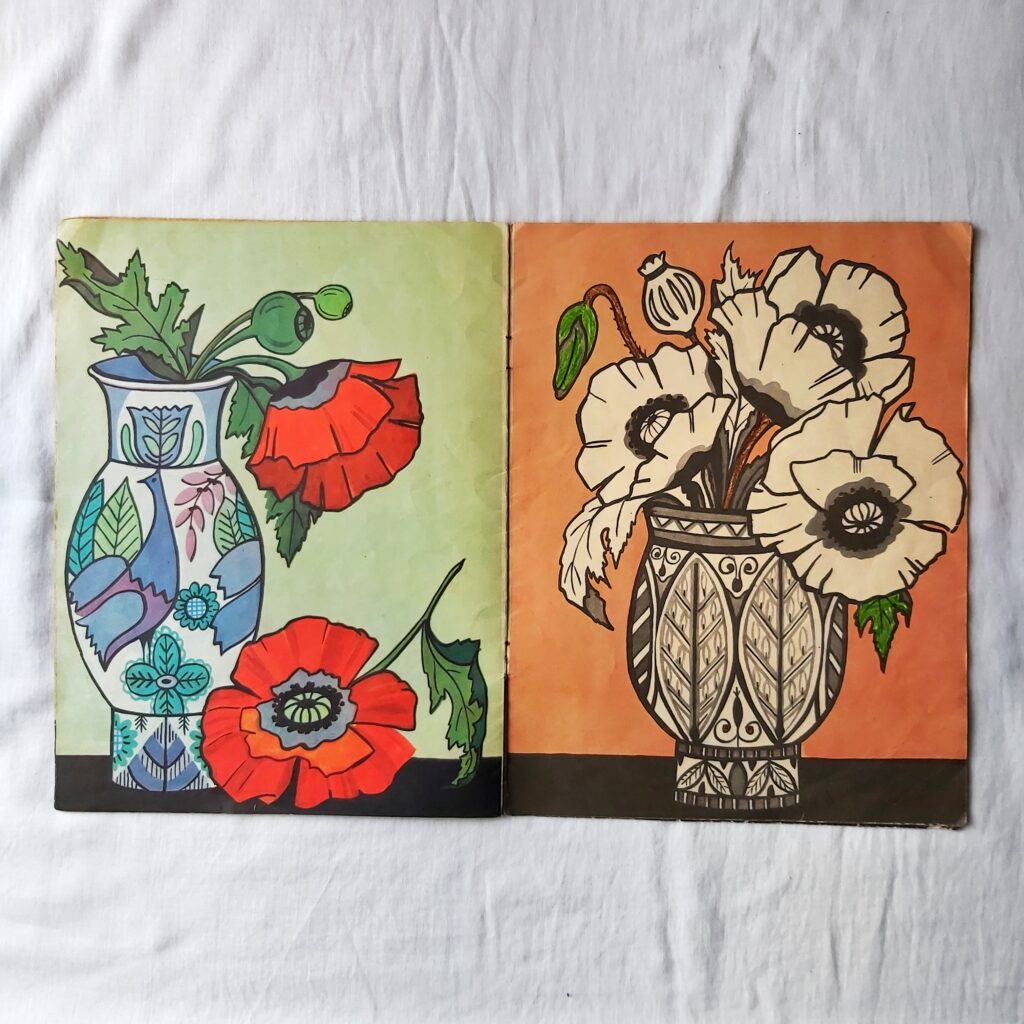
I cannot ascertain the publication date of the book because unfortunately that page is missing. If we go by history- the USSR was dissolved in 1991 and the book was new when it was bought in the late 80s. So, going by an approximate assumption the book was probably published sometime in the 1980s. My mother has held on to this book, and a few other Russian ones, ever since and it has been in the family now for about three decades.
A colouring book, the quality of its paper is smooth with a touch of grain so as to allow the colour to lodge on to the paper. But it is nicely thick at the same time, so that my younger self’s felt pen scribblings have not soaked in onto the other side. It’s a colourful book in subdued tones with elaborate pictures of still life, some coloured and some outlined. It’s slim with currently about 17 pages and roughly 28.5cm x 21cm in size. Given that, the book has a slightly tattered back cover with a few colouring spaces completely filled, a few half-filled and a few others still vacant. On one of the pages, the reindeer has been crayoned green with pink antlers and the flower is brown but if you look carefully, you’ll see the colours do not bleed beyond the boundaries.
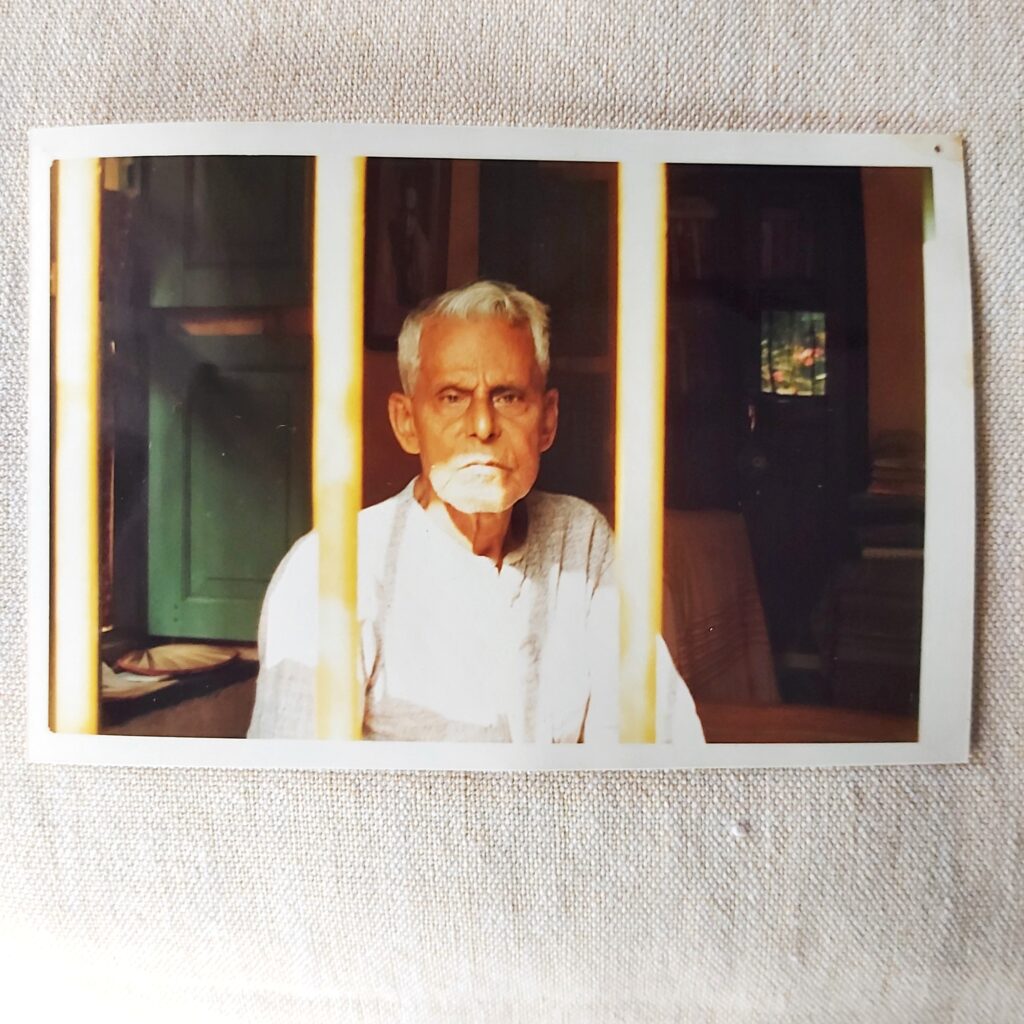
My mother has a collector’s soul, probably inculcated by her own parents. My grandfather encouraged her to keep an art journal as a child, where she collected prints of various paintings and artwork and photographs from newspapers, magazines, book fairs. My house happens to be a home to a variety of old thingamajigs from silver powder cases to punkahs (fans). My mother has given me same habits, teaching me to value the sentiments and feelings attached to objects. She was always careful not only about the toys I played with or the books I read but also that looked after them with utmost care. This was perhaps the reason why this book had an incubation period in the family before it came into my hands as a child. Though my grandfather gifted it to me at a very early age, my mother thought it best to let me use it only a couple of years later when I had practice and could use it well.
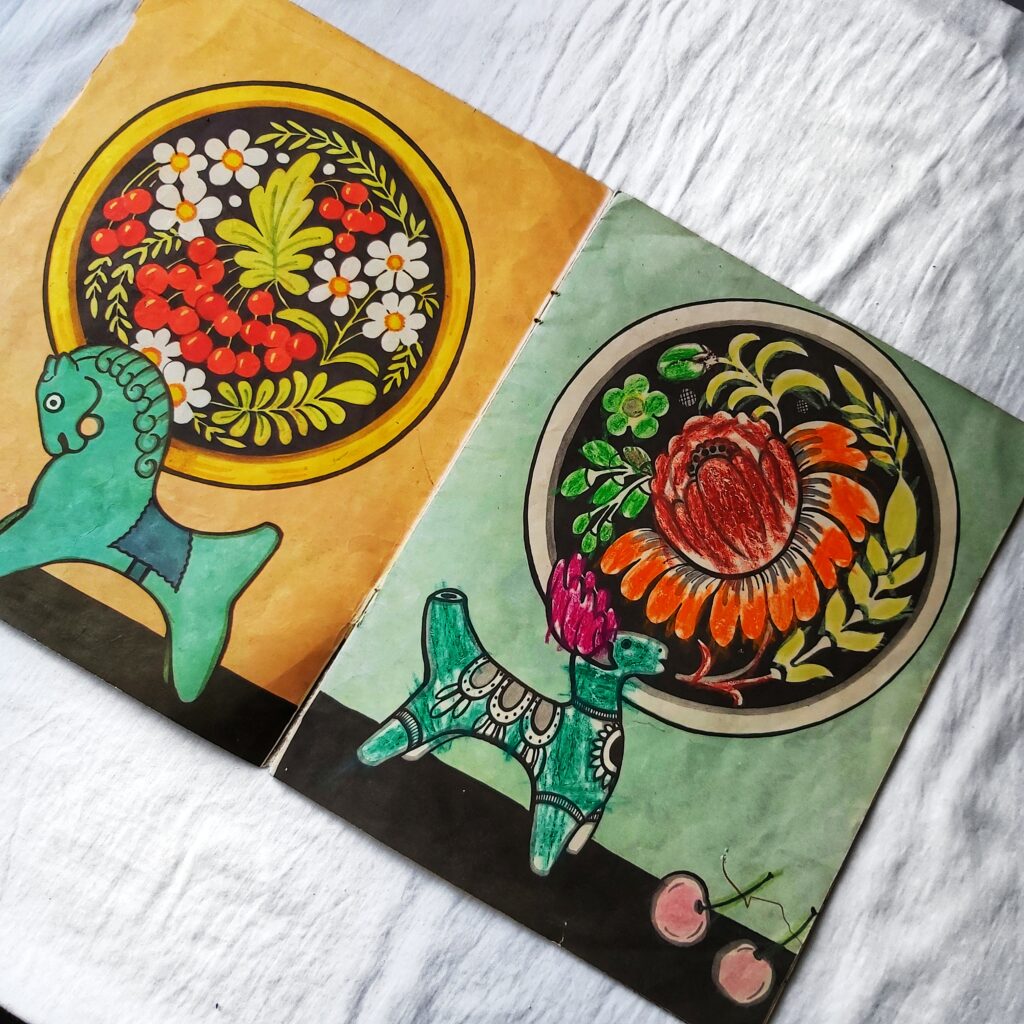
My mother has a special couple of drawers in her closet where she keeps collectibles from my childhood days. The Russian colouring book stays tugged in that cosy space in the house. I did not have access to those drawers for a very long time and now that I do, I understand why. The book is not so much an object of memory for me as it is for my mother and had been for my grandfather. Children grow up all the time and parents hold on to things like these as gentle reminders of who and how their child used to be. As a daughter who is close with her parents and still lives with them most of the year round, my writings often reflect my thoughts and feelings for them, my memories with them. But as I write now, I feel that their memories of my childhood, their thoughts and feelings are way more elaborate, detailed, deep and passionate than mine ever can be. It is only natural to hold on to the by gone days through bits and parts that have survived.
As mentioned earlier, my grandfather, was a voracious reader and a man who had a penchant for books. He has been the prime force behind my addiction to books, art, history or in general, my thirst for knowledge. And this began at a very early age, the colouring book here being solid proof of that. My mother says I was a prodigious scribbler and a pencil or a pen in hand, I could create a massacre of chaotic lines on the nearest available surface. My grandfather used to get me these books all the time to give this horrendous habit of scribbling anything and anywhere, an artistic bent. Now, looking back, I would say he succeeded in his purpose of introducing me to the ways of an artist as a kid. He always told me that the numerous books he bought and collected over the years would be his legacy and when one day he would be no more, he would speak to me through them. I never quite understood the depth of these words but now in my 30s and having seen quite a few people close to my heart succumb to death, I only understand them a little too well.
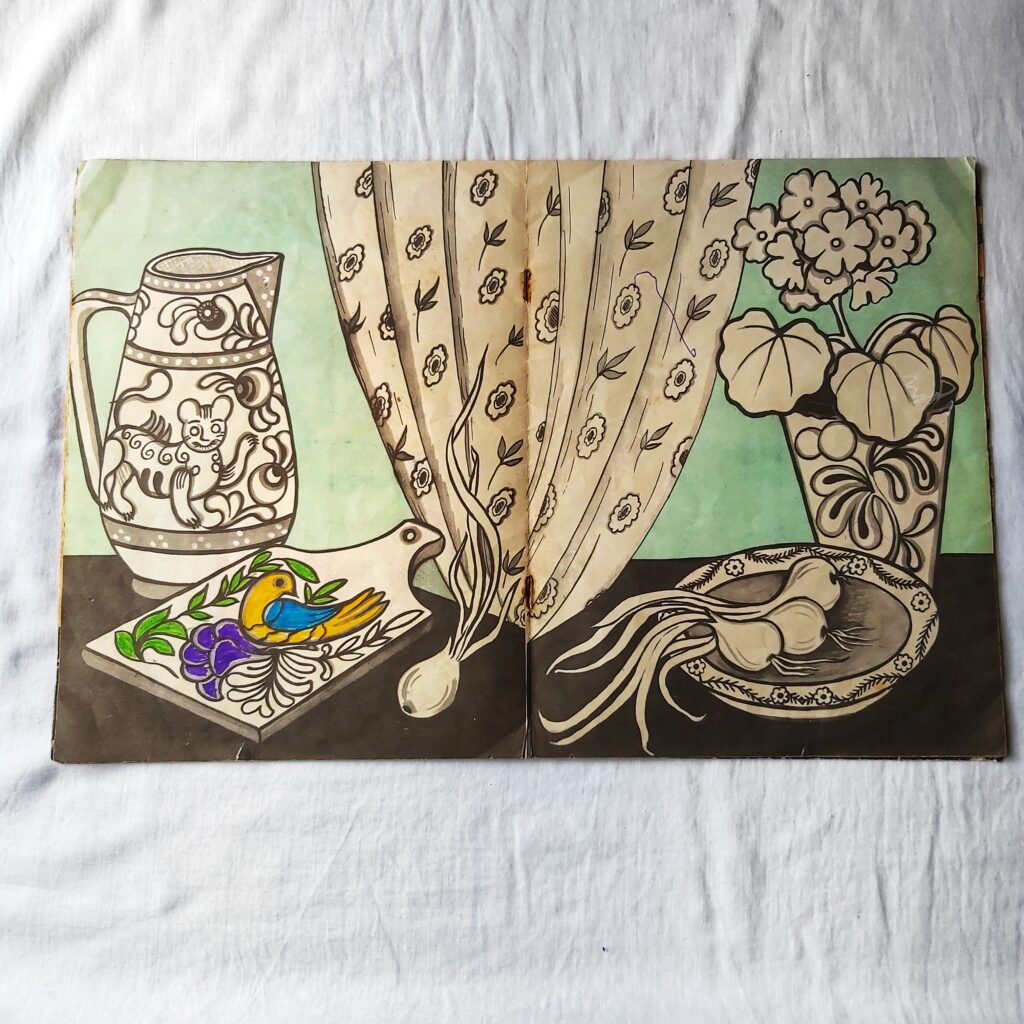
Apart from the memory attached to it, this book is special for another important reason. It is different from most available in the market today. Every left page of the book contains these already illustrated samples by Obrucheva. Unlike most colouring books that teach by copying, this one adopts a different method. The page on the right does not contain a copy of the picture from the left for the child to colour. The subject of the samples is the same, but the two pictures are not copies of each other. For example, both the pictures are of flower vases with a bouquet of flowers but they are different flower vases with a different assortment of flowers altogether.
The method of teaching the child here is inductive, rather than deductive. An inductive approach involves the learner detecting or noticing patterns, systems, compositions and working out a ‘rule’ for themselves while practicing the subject. This is how this book approaches the child learners to learn art. Not to copy but discover. Published in the USSR, where after the Great October Socialist Revolution in 1917, a socialist system existed, the book trade was in the hands of the state and was deemed as a crucial and effective means of ideological education. The inductive method of teaching is a reflection of the same. And whatever the arguments may be for or against the socialist system and its practices in the then USSR, there is no denying that the non-conformist inductive method of teaching is way more constructive for and impressionable on children than the deductive method.
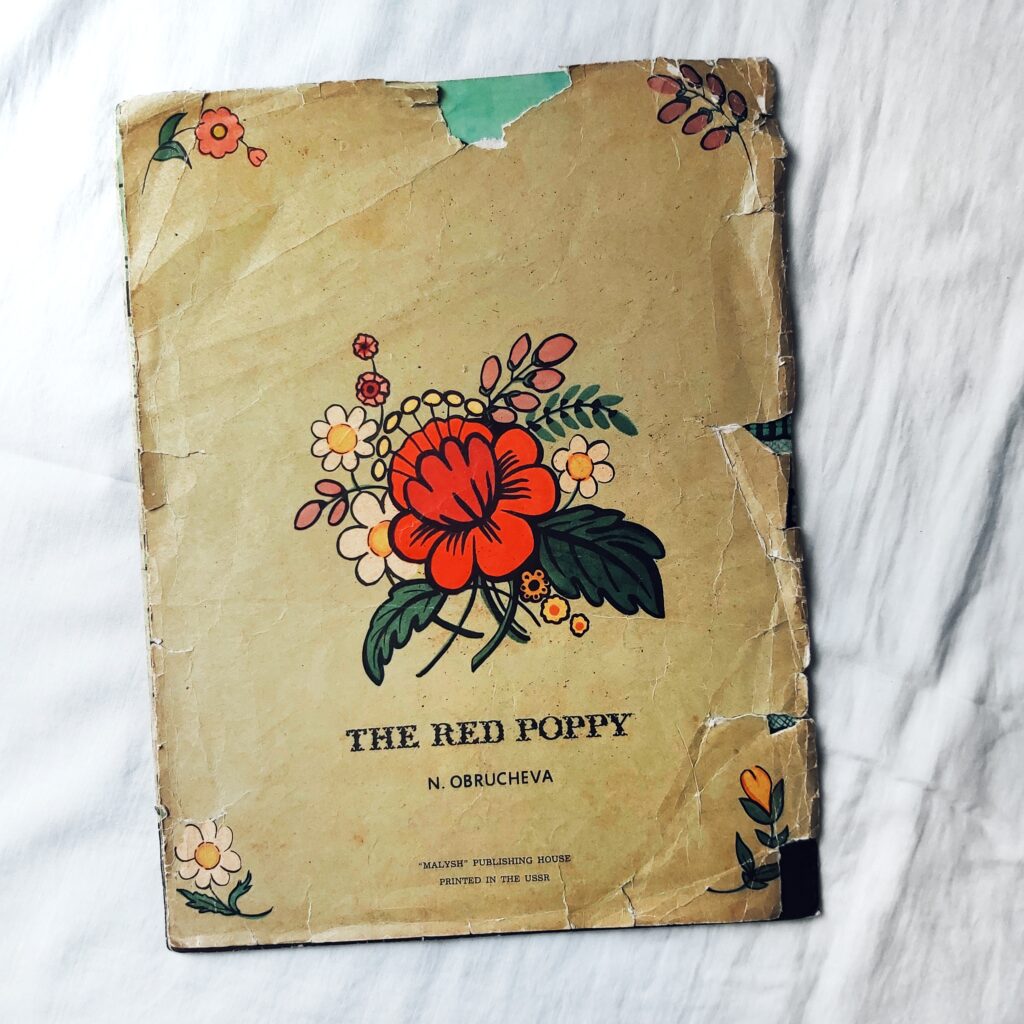
I am sure my grandfather must have noticed this bit, the observant man he was. I am glad and grateful to have had a childhood filled with love and the tutelage of people like him and my parents who did not rely solely on mainstream, popular, formal educative techniques but tried their best to encourage and enhance my abilities and talents in manners essential for me to grow up into a socially responsible human being. For me, this is perhaps the book’s legacy, especially now, in a time when in our own country, the education system is failing and being attacked by hollow
policies that nullify the entire aim of education itself. A college teacher by profession, my first-hand experience with teenagers show me the dire need for an immediate reform in our education system.
I would like to see the future generations understand not the value of high scores but to realize the importance of discovering oneself and the necessity of becoming a responsible human being. In this, books like Obrucheva’s The Red Poppy, become all the more crucial.
